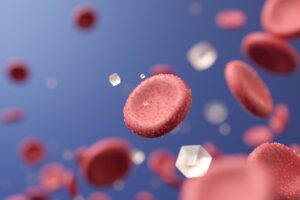Located 180 kilometres east of China, the island of Taiwan is where old and new meet with its beautiful traditional Chinese temples and tall skyscrapers such as the likes of Taipei 101, which held the record for tallest skyscraper in the world from 2004 to 2010.

If you travel for food, you’re in for a treat because Taiwan is famous for its night markets which are chock full of all manner of things to eat and buy. Shilin Night Market is the largest and most well-known night market in Taipei and has been around since 1913. Try local delights like stinky tofu or if the smell is a bit too pungent for you, get the oyster omelette and wash it all down with an ice-cold bubble milk tea!

TAIPEI, Ximending
The capital of Taiwan is a mix of shopping streets punctuated by skyscrapers and a lively street food scene at the numerous night markets. Go luxury shopping at the base of the Taipei 101 skyscraper or check out the shopping district of Ximending for bargain buys.
Ximending has been compared to Harajuku and Shibuya of Tokyo, Japan because it is the source of Taiwan’s fashion, subculture and Japanese culture. Additionally, if you want to check out the night life, Ximending has loads of clubs and pubs in the area for you to eat, drink and be merry in. To get here, take the Taipei Metro and stop at Ximen Station and you’ll arrive at the shopping district after a short walk.

National Palace Museum
For the art buffs, the National Palace Museum is a must visit for its huge collection of Chinese Imperial Art that ranges from paintings and pottery to calligraphy and jade exhibitions. The National Palace Museum’s collection showcases 8000 years of Chinese art history. Marvel at the building’s architecture which is both beautiful and also functional because it is earthquake and flood resistant.

Jiufen
If you’re a fan of Ghibli’s Spirited Away, Jiufen is not to be missed and you definitely won’t want to forget your camera. Jiufen is a mountain town famous for its narrow old alleyways filled with teahouses, street food and souvenir shops. There’s also a Gold Mine Museum nearby which traces Jiufen’s history as a mining town until the 1950s. A must try in Jiufen are the taro balls (芋圓) and their locally produced ginger tea and plum wine.
From Taipei, you can take either the train, bus or even minibus to Jiufen. The trip by bus from Taipei to Jiufen will take more than one and a half hours but do take the time to enjoy the beautiful views of the valley as the bus ascends to Jiufen.

HUALIEN, Taroko National Park
Located in Hualien, on the west of the island, this is one of nine national parks in Taiwan and was named after Taroko gorge, which was named after the local Truku aboriginal tribe. Not to be missed at this national park is the Eternal Spring Shrine (長春祠), a landmark and memorial shrine complex for the veterans who passed away while constructing the Central Cross-Island Highway built nearby.
The best way to explore is to go on a walking trail through Taroko National Park so you won’t miss the beautiful bridges and the amazing views! Taroko National Park is accessible via train from Xincheng Station of the Taiwan Railways Administration and then a bus ride away.

NANTOU, Sun Moon Lake
Located at the foothills of Taiwan’s Central Mountain range, this breathtaking lake is surrounded by forested peaks. At the east of the lake, there is the Formosan Aboriginal Culture Village which is a themed park that’s devoted to recreating the indigenous villages of Taiwan. Here, there are centuries-old carved pieces, handicrafts and weapons on display. However, the main attraction remains the lake which is also the largest body of water in Taiwan.
References: The Culture Trip; Lonely Planet












